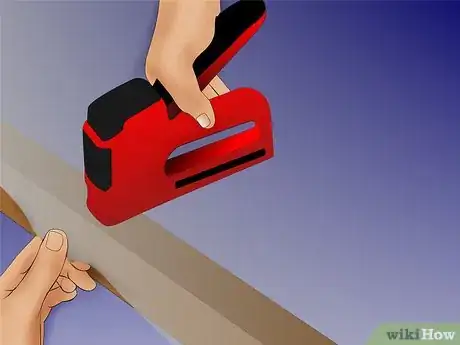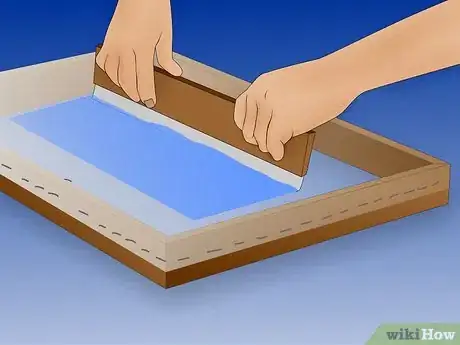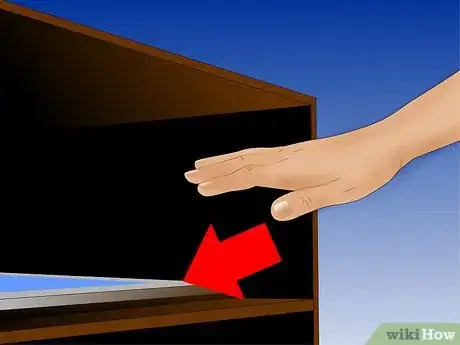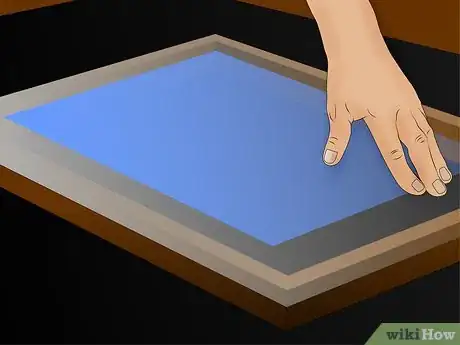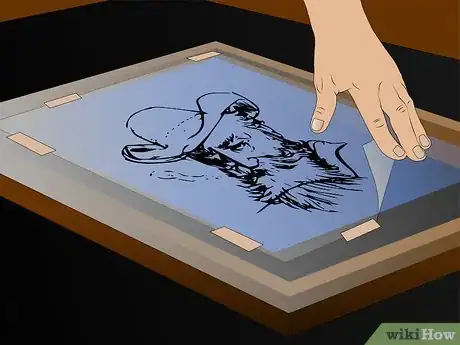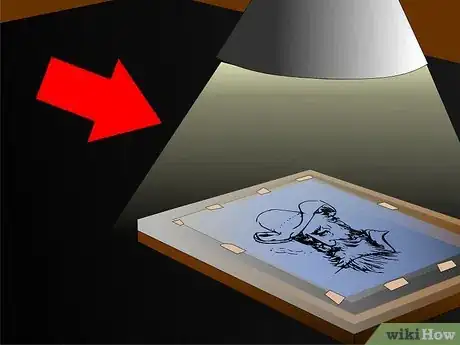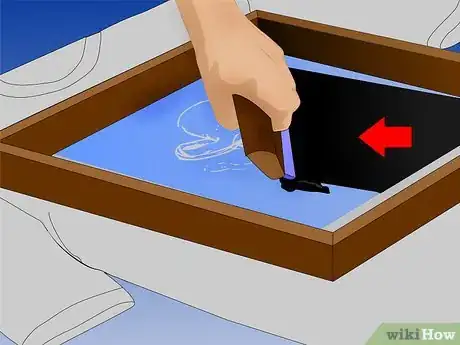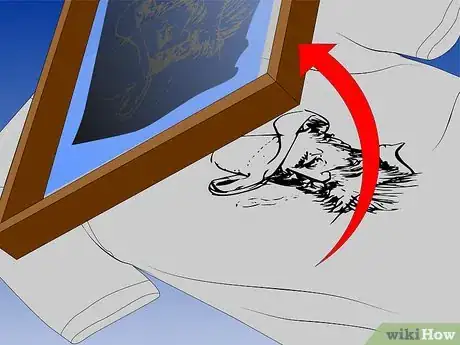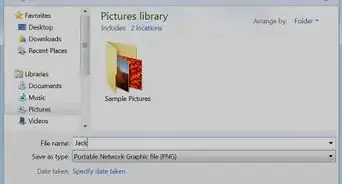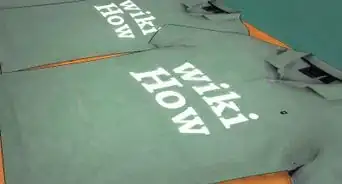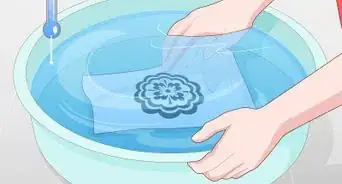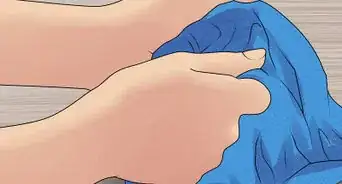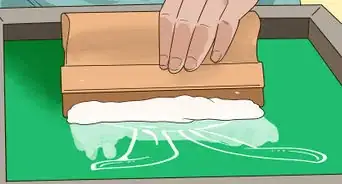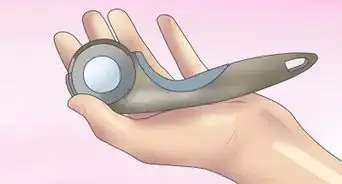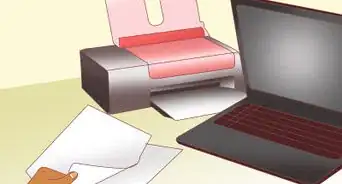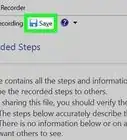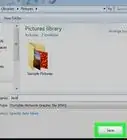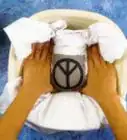X
wikiHow is a “wiki,” similar to Wikipedia, which means that many of our articles are co-written by multiple authors. To create this article, 36 people, some anonymous, worked to edit and improve it over time.
This article has been viewed 260,665 times.
Learn more...
Screen printing on fabric is a wonderful way to improve the look of fabric and to make any sort of pattern that suits your needs. You will need a reasonable amount of space and to set aside some time to dip in and get messy but the end results are well worth the effort. This article explains how to screen print fabric.
Steps
-
1Lay out your wooden frame onto your choice of fabric.
-
2Staple your fabric very tightly to the frame -so tight, you think it is going to rip. Staple one of the corners first, stretch it, then staple the opposite corner. Go back to the first corner, stretch the fabric, and staple about one inch clockwise from the 1st staple you made. Go back to the opposite corner, stretch the fabric, and staple one inch clockwise next the other staple. Keep doing this, going back and forth, and stretching every time, until you get all the way around the screen. What should happen is that you have to re-staple the first couple that you made because they are looser than the rest.Advertisement
-
3Spread your mixed-up emulsion onto the fabric very thinly in a completely dark room. (although some emulsions are safe to use in a low light/sunlight environment). The package should have directions on how to prepare the emulsion. Spread on both sides, make sure the whole thing is wet, with no spots missed. To see what you are doing, use a red photo-darkroom light.[1]
-
4Let it dry in a completely dark place overnight.
-
5Spread the black paper all over the floor and put your screen on top, wood side down (with staples on top).
-
6Tape your transparencies with clear tape to the dry surface of the screen.[2]
-
7Set up your lamp directly over the screen (distance according to directions), and turn the light on for however long it says in the directions.
-
8Rinse your screen with very cold water. Let dry.[3]
-
9Lay your screen staple-side down on your fabric, put a line of paint on the screen, along one side, and with your squeegee, lay down a flood stroke using light pressure, the next pass should be firm with a smooth motion to press the ink through the screen onto the fabric.[4]
-
10Lift up the screen and you have an image on the fabric! Let dry.[5]
-
11Iron the back side of the fabric for however long it says to on the paint container.
-
12Wash the fabric.[6]
Advertisement
Community Q&A
-
QuestionWhat type of ink should I use to screen print on fabric?
 Community AnswerDirect permanent screen printing ink or fabric paint.
Community AnswerDirect permanent screen printing ink or fabric paint. -
QuestionWhat is the best type of squeegee?
 Community AnswerIt depends on what color ink you're using, but a 70 squeegee is good for most. They are generally green in color. It will bend under the pressure of your hand gripping it, but only a little.
Community AnswerIt depends on what color ink you're using, but a 70 squeegee is good for most. They are generally green in color. It will bend under the pressure of your hand gripping it, but only a little. -
QuestionHow environmentally-friendly is screen-printing ink?
 Community AnswerWater-based inks aren’t too bad, but plastisol contains dangerous solvents that are “burned off” during the heat-curing process. This is what plastisol is generally not used on children’s garments, given that young children tend to explore with their mouths and there is always a risk of some solvent remaining on the garment. These days there are eco-friendly versions of most other products needed for screen-printing.
Community AnswerWater-based inks aren’t too bad, but plastisol contains dangerous solvents that are “burned off” during the heat-curing process. This is what plastisol is generally not used on children’s garments, given that young children tend to explore with their mouths and there is always a risk of some solvent remaining on the garment. These days there are eco-friendly versions of most other products needed for screen-printing.
Advertisement
Warnings
- It's easy to apply too much emulsion to the screen because you will probably have a great deal of extra. If you do this and drips form as it is drying, these will form holes and accidental open spaces in the screen. You will need to patch these later.⧼thumbs_response⧽
Advertisement
Things You'll Need
- organdy silkscreen fabric
- wooden artist frame
- staple gun with staples
- squeegee
- set of silkscreen photo sensitizer and emulsion
- heat-set fabric paint
- your chosen image printed out in all black (no grayscale) on a transparency
- a big cleared space to set up your light station
- lamp with a 200 watt bulb.
- a safe light room (not a dark room), a few sheets of yellow cellophane over fluorescent tubes does the trick
- black non-glossy paper
- place to wash your screen (shower or tub)
- whatever fabric you want to print on
- household iron
- cleaning Powder (for frame washing)
References
- ↑ https://www.youtube.com/watch?v=MDDE8VvViFo
- ↑ https://lifehacker.com/a-simple-guide-to-screen-printing-your-own-shirts-5886483
- ↑ https://lifehacker.com/a-simple-guide-to-screen-printing-your-own-shirts-5886483
- ↑ https://www.youtube.com/watch?v=uIHOSzbNT8Q
- ↑ https://www.theguardian.com/lifeandstyle/2010/may/11/how-to-screen-print-tshirts-at-home
- ↑ https://www.bhg.com/homekeeping/laundry-linens/clothes/how-to-wash-clothes-by-hand/
About This Article
Advertisement

